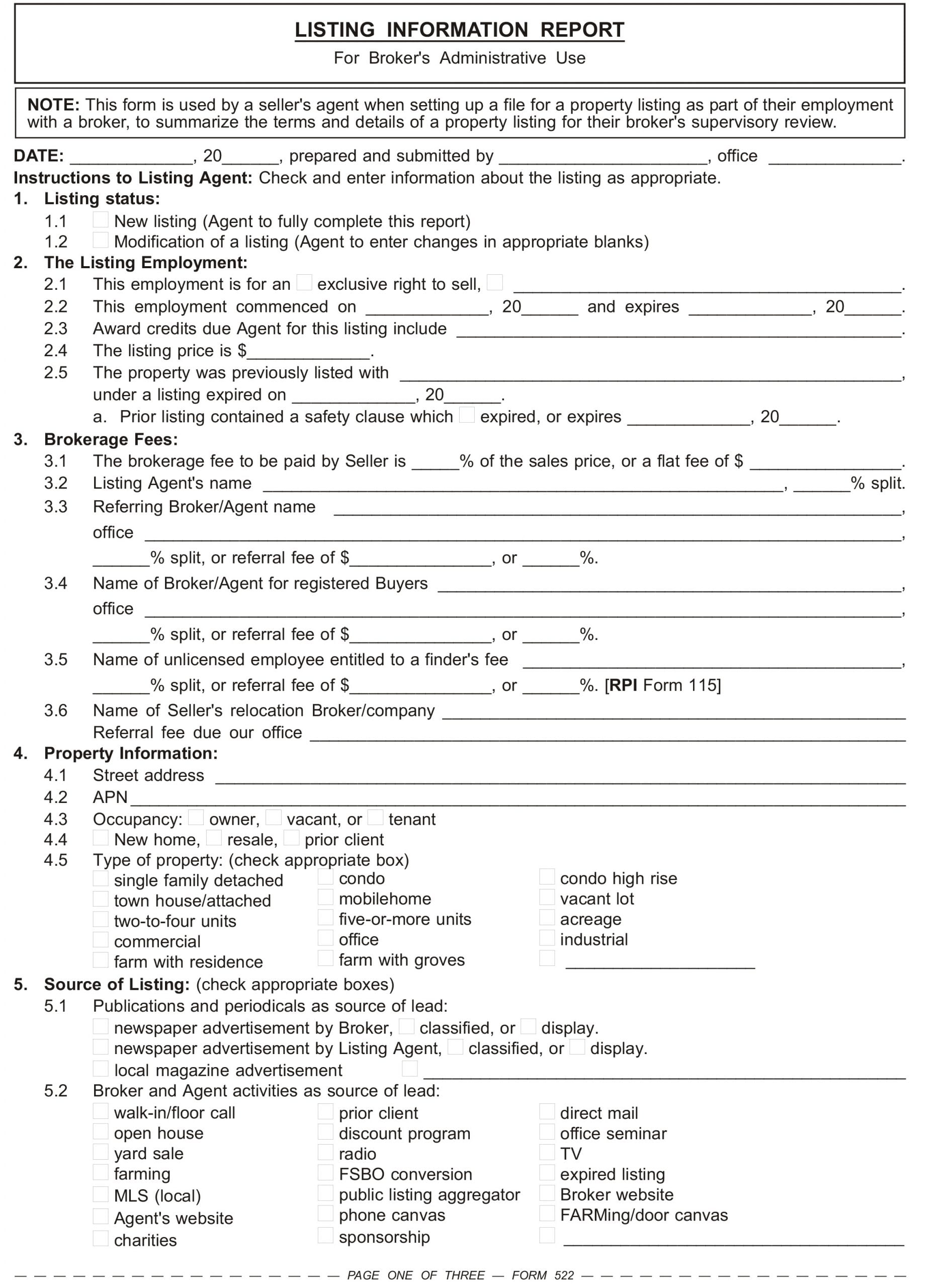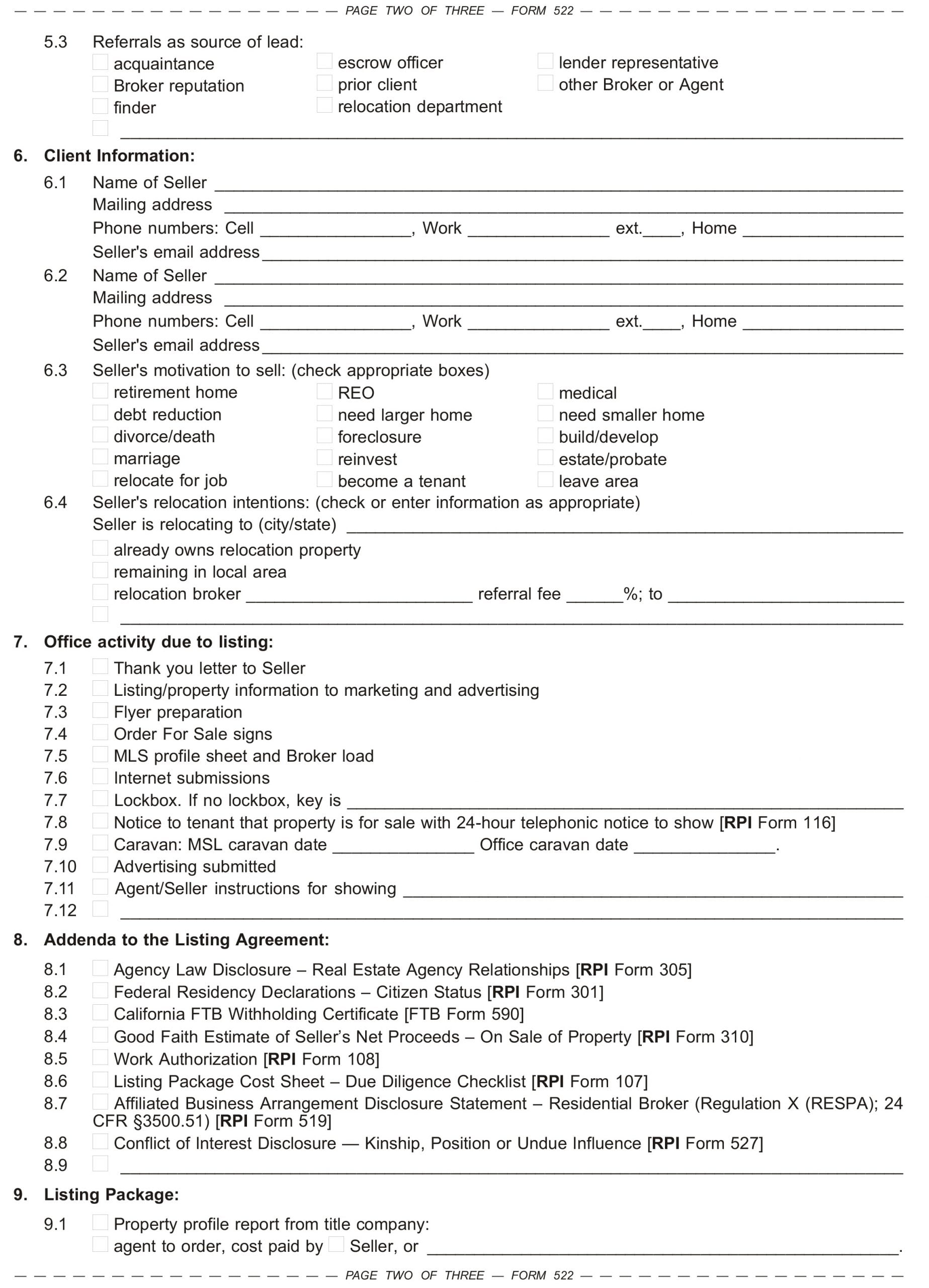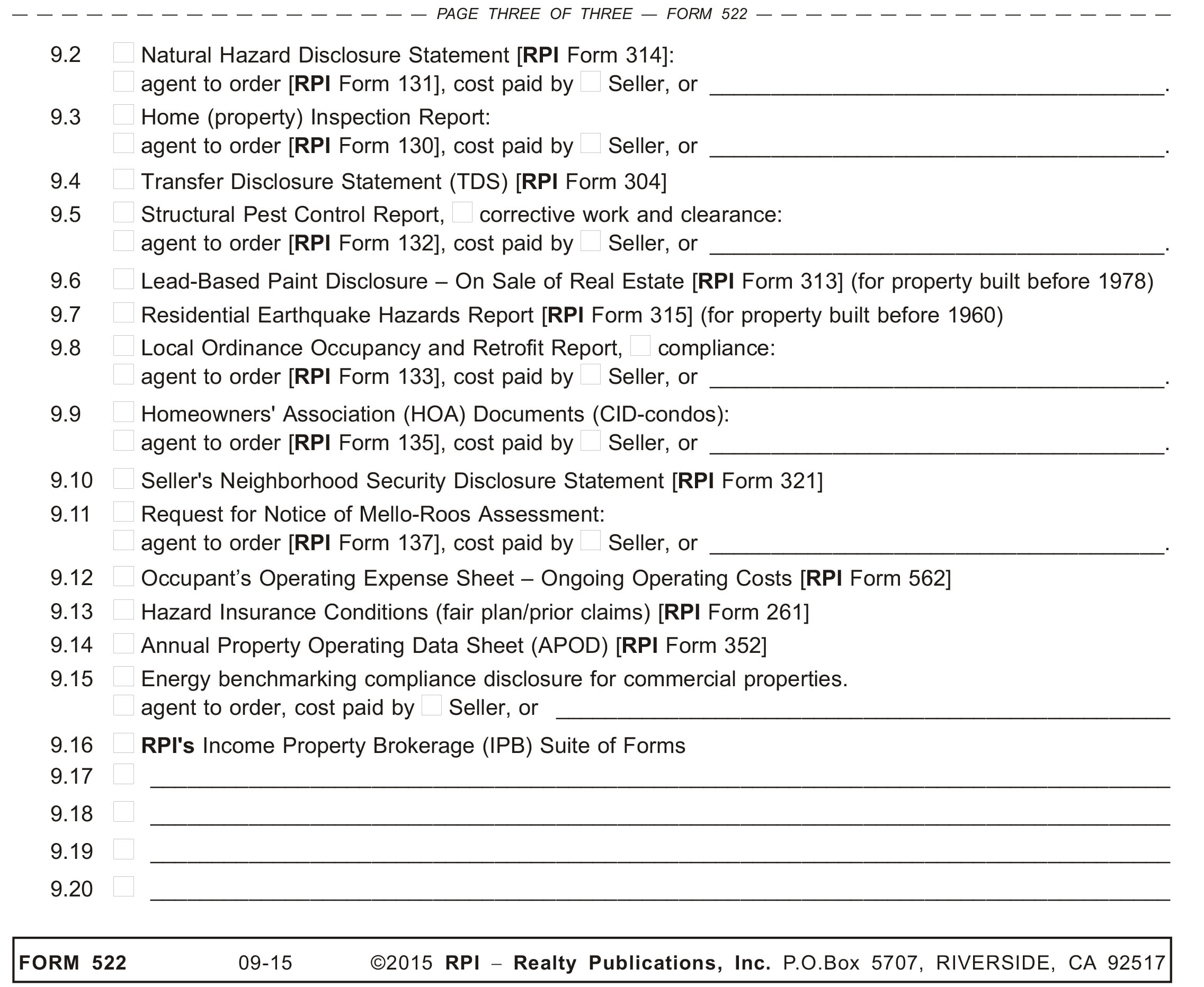Maintaining the client file for oversight and business development
An agent employed by a broker solicits members of the public to retain them as their agent to render real estate services. With a little perseverance, the agent encounters owners who enter into listings employing the agent’s broker to locate buyers and sell their properties.
When the transaction closes, the broker, and in turn the agent, receive an earned fee – the primary motivation for becoming a sales agent.
From the first solicitation of a client to receiving the fee on a closed transaction, massive amounts of data are gathered, received and analyzed by the agent. The agent further coordinates and documents numerous events related to the transaction. Without listing reports from the agent detailing their activities, the broker is unaware of the transaction activities taking place on their behalf – from the agent’s solicitation of employment to the receipt of a fee on a closed transaction.
As part of the employing broker’s supervisory duties, the broker needs data on the listing report to:
- better mine for clients;
- confirm necessary disclosures are made to the client at the time of employment and through the transaction; and
- provide critical supervisory support for marketing the property.
The listing report is the agent’s first critical delivery of unified information on the employment to their broker. To be effective for all participants, the listing report is to be completed by the agent and delivered to and reviewed by the broker before marketing the property to locate buyers.
The supervisory role of the agent’s broker on listing property
An agent who obtains a listing becomes the individual in the broker’s office who is initially responsible to the broker for the care and maintenance of the client’s file.
On entering into a listing appointment, the agent sets up a physical client file to house information and documentation on all activity which arises within the broker’s office due to the existence of the employment.
For example, the file on a listing for the sale of the property is to contain:
- the original listing agreement [See RPI Form 102];
- the Agency Law Disclosure [See RPI Form 305];
- any addenda and other attachments needed as part of the listing agreement;
- property disclosure documents the seller and the seller’s agent provide to prospective buyers and their agents during the marketing of the property, such as the:
- an activity sheet for the entry of information on all activities generated by the employment and marketing effort [See RPI Form 520]; and
- a listing information report [See RPI Form 522].
The client file contains any paperwork related to the transaction, such as notes, email correspondence, billings, advertising copy, and all other related documentation. Thus, everything that occurs as a result of the client employment is centrally retained in the client file to be reviewed by the broker.
The listing information report
The Listing Information Report – published by RPI (Realty Publications, Inc.) – is used by the seller’s agent when setting up a file on listing a property for sale. On it, the agent summarizes the terms of the employment and details of the property for their broker’s supervisory review.
The report is used when:
- a new listing agreement for the sale of property is taken; and
- modifications are made to the employment or terms for marketing the property. [See RPI Form 522 §1]
The Listing Information Report documents:
- details on the employment under the listing agreement [See RPI Form 522 §2];
- the brokerage fee to be paid by the seller and how it is to be split between the broker and agent [See RPI Form 522 §3];
- property information [See RPI Form 522 §4];
- the source of the listing lead [See RPI Form 522 §5];
- the client’s information [See RPI Form 522 §6];
- all office activity which arises within the broker’s office due to the existence of the listing [See RPI Form 522 §7];
- any addenda to the listing agreement [See RPI Form 522 §8]; and
- all information provided in the listing package. [See RPI Form 522 §9]
Additional forms and documents used to build a file’s content may vary depending on the type of property and transaction involved. These forms and documents typically include:
- checklists prepared by a broker or their listing coordinator;
- a transaction coordinator’s (TC’s) closing checklist [See RPI Form 521];
- escrow worksheets [See RPI Form 403];
- work authorization forms [See RPI Forms 130-134];
- advance cost checklists [See RPI Form 107]; or
- income property analysis forms. [See RPI’s Income Property Brokerage (IPB) Suite of Forms]
File activity sheet
The File Activity Sheet published by RPI is used by an agent or broker when engaged in a real estate transaction and maintaining records for the employing broker’s oversight, to enter information identifying all contacts with the client and others regarding activities which transpire during the agency undertaken. [See RPI Form 520]
The File Activity Sheet is designed in a simple columnar format, included is a space to note the file activity which occurred, the date it was completed and the time spent doing so.
The broker’s file
The client file belongs to the broker, not the seller’s agent. However, the file typically remains with the listing agent until the sale is closed or the listing expires un-renewed. The agent thus hands the broker the entire file on the close of escrow. Delivery of the file with the agent’s final closing report is usually a condition precedent to payment of the agent’s share of the fee received by the broker.
The broker or office manager periodically reviews the file as a supervisory requirement. Initially on taking a listing and on employment modifications, the filled-out Listing Information Report, along with the other pertinent forms and documentation, is thoroughly reviewed by the broker or office manager.
When the file is closed by the agent, the report provides the broker or manager with all the information necessary to distribute fee splits and referral fees.
Checklists belong in the file and are used by the agent. They are reviewed periodically by the agent, office manager or employing broker for oversight and to determine future tasks needed to better service the listing and earn a fee.
This article was originally published in September 2015 and has been updated.


















